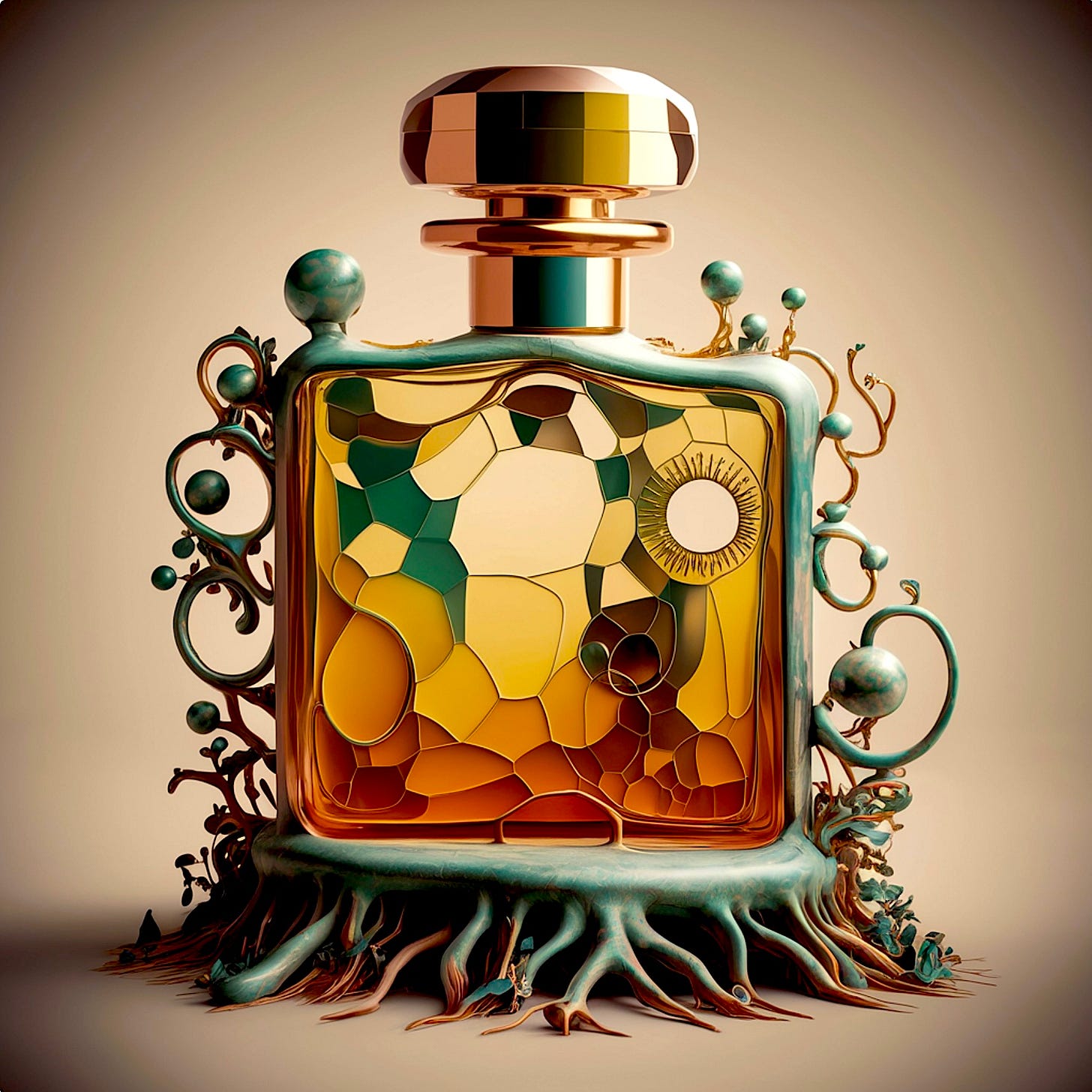As I mentioned in a note, I received a big box, covered in that staccato Brit outdoor-menu handwriting that uniquely says “Lush,” containing eleven fragrances. I asked whether there was an embargo on them. The answer was that they would be on general release in September, but you could smell them now in London’s Soho, at Lush’s new Perfume Museum on Beak Street. I was welcome to write about them, so here goes.
Lush fragrances have, from the outset, followed a pattern that can be traced back to the revolution that was Jean-François Laporte’s Vanilia (1978, L’Artisan Parfumeur). Until then, a perfume in the classical style would work like a catwalk, one accord coming to the fore after another before receding backstage. Vanilia instead worked like a lineup or a pageant, all the formula’s beauties in full view, all smiles. The effect was stunning. It wasn’t just the vanilla and the candyfloss smell of ethyl maltol. (Laporte was a chemist and used this stuff long before others did.) It was a new game altogether: everything at once, all the time.
The fact that this revolution happened with Vanilia is no accident. What Laporte did was treat a perfume as one would a flavor. When you bite into a ripe peach or take a slug of a Negroni, you’re not thinking about top notes and drydown. It’s all there from the start, mainly in the brief interval of retronasal olfaction, from the mouth to the nose via the back way. Wine writers contort themselves into pretzels to give wine a longer time dimension, with things “lingering on the palate,” but we’re still talking seconds, not minutes or hours.
In the early ‘80s, proper perfumers thought Laporte wasn’t playing by serious rules. For a long time, L’Artisan Parfumeur, the first niche firm1, was pooh-poohed for supposedly making stuff for adolescents and ditzy hippies. Many later imitated Laporte, but only a tiny few had his uncanny sense for mood and color. This said, nothing he did after Vanilia hit quite the same level of euphoria. He died in 2011. L’Artisan Parfumeur moved on. The father-son team of Mark and Simon Constantine, as perfumers and art directors at Lush and at Ånd, have, practically alone, continued and extended the style to this day, taking it far beyond edibles into novel forms.
Classical, time-based perfumery is based on reveals. Much of contemporary niche perfumery, especially when second-rate, is based on mood: a static, ambient smell upgraded to perfume. Lush’s style is something else altogether, best described as a Big Band blast. For a long time, I thought the Lush manner, while irresistible, lacked mystery. I now see that the fact that it works so beautifully is mystery enough.
For paid subscribers: reviews of Vegan Leather Jacket, No Way To Say Goodbye, Chelsea Morning, Time Of The Season, The Dew On Their Hems, The Bee’s Knees.
Keep reading with a 7-day free trial
Subscribe to Luca Turin on perfume etc. to keep reading this post and get 7 days of free access to the full post archives.




